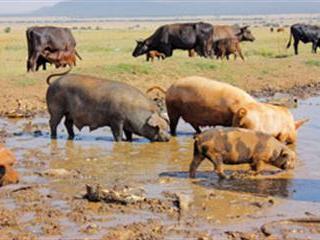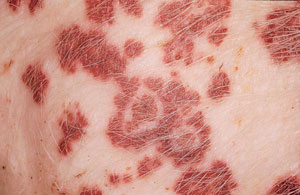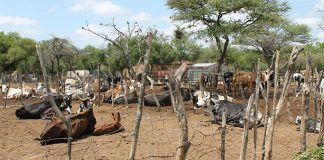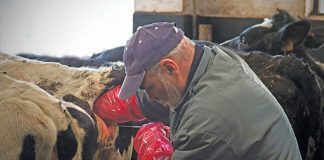
Malnutrition, or under-nourishment, is a common problem in pigs. The animals will be thin and grow slowly. In a healthy, well-nourished pig, the only bones that should be visible are the shoulder blades. If you can see the backbone, hip bones or ribs, the pig is too thin. Pigs grow rapidly, and you should be able to notice this growth easily. If your four-month-old piglets are only slightly bigger than your two-month-old piglets, there’s a problem.
Generally, malnutrition results from insufficient or poor quality feed. Remember that growing pigs need more feed, and of a higher quality, than adult pigs. Lactating sows, too, need extra food to produce milk, otherwise they will start to lose weight themselves. Another common problem in small pig herds is mange, which is caused by parasites called mites that live in the skin. The latter are tiny, with each mite being smaller than a full-stop.
The symptoms of the disease are obvious: the animal’s coat will appear dull, with bare patches, heavy crusts and lines that look like ribs. Also, the skin becomes itchy and the pig rubs itself against walls and other objects. Mange can be controlled with dips, sprays or injections: your vet can advise you on suitable medication. If you and your neighbours have only a few pigs each, it will be more affordable if everyone clubs together to buy medicine. Piglets normally become infected by adult pigs; if you treat the adults regularly, there should be no need to treat the piglets.

The tell-tale marks of diamond skin disease. Courtesy of the british Veterinary association
Lice, flies and skin diseases
Pig lice are large and easy to see, and can cause blood loss. Treat them with sprays. Flies can also be a problem as they tend to enter wounds. They can be controlled by ensuring good hygiene in the pens, as well as by using traps, flypaper and sprays. Take care, however, not to spray directly onto the feed. Greasy pig disease results in yellowish crusts on the snout, around the mouth and behind the ears. These can spread all over the body. The disease can be treated with antibiotic injections.
Diamond skin disease produces large, dark-red patches on the skin. It can lead to fever, vomiting, diarrhoea and lethargy, and even death. It should be treated as soon as possible with antibiotic injections. Fortunately, you can vaccinate your pigs against the disease. Finally, remember that pigs can suffer, just like humans, from sunburn. So be sure to provide your herd with enough shade at all times.
Get expert help
For further information, speak to your state or private vet, or contact Animal Health for Developing Farmers at the ARC-Onderstepoort Veterinary Institute, on 012 529 9158. Alternatively, contact the South African Pork Producers’ Association on 012 361 3920, or [email protected], or visit www.sapork.com.
Sources: Farming with Pigs (Western Cape Department of Agriculture). Guide to Small-Scale Pig Farming by EH Kemm (department of agriculture). Common Diseases of Small Pig Herds by M-L Penrith (department of agriculture). South African Pork Producers’ Association (www.sapork.com).













